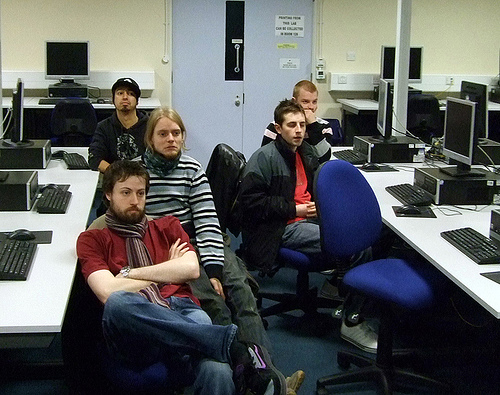This story from thestar.com in Canada shows just why we need to tackle issues over assessment (thanks to Cristina Costa for forwarding). Ryerson University is threatening to expel a student for administering an on-line study group.
“First-year student Chris Avenir is fighting charges of academic misconduct for helping run an online chemistry study group via Facebook last term, where 146 classmates swapped tips on homework questions that counted for 10 per cent of their mark.
The computer engineering student has been charged with one count of academic misconduct for helping run the group – called Dungeons/Mastering Chemistry Solutions after the popular Ryerson basement study room engineering students dub The Dungeon – and another 146 counts, one for each classmate who used the site.
Avenir, 18, faces an expulsion hearing Tuesday before the engineering faculty appeals committee. If he loses that appeal, he can take his case to the university’s senate.
The incident has sent shock waves through student ranks, says Kim Neale, 26, the student union’s advocacy co-ordinator, who will represent Avenir at the hearing.
“All these students are scared s—less now about using Facebook to talk about schoolwork, when actually it’s no different than any study group working together on homework in a library,” said Neale.
“That’s the worst part; it’s creating this culture of fear, where if I post a question about physics homework on my friend’s wall (a Facebook bulletin board) and ask if anyone has any ideas how to approach this – and my prof sees this, am I cheating?” said Neale, who has used Facebook study groups herself.”
Ir seems fairly ridiculous that we spend so much time and trouble working on the use of new technologies for collaborative learning – and even more so for encouraging autonomous learning, only for academic institutions to take actions like this. Furthermore, every survey of employers suggests that the ability to work as part of a team is both one of the most sought after competencies and one which they feel is not being taught by the education system.
If the university is really worried about the integrity of its assessment system there are many things they could do. At a simple level why not set group assignments. Peer group assessment can provide for individual assessment within a group. Or, they could take a little more time and trouble and develop more authentic assessment to test each learner’s ability to apply knowledge developed through group work.
As Chris Avenir says ” if this kind of help is cheating, then so is tutoring and all the mentoring programs the university runs and the discussions we do in tutorials.”



